John Hurrell – 21 March, 2020
With the seven collages, you—and the artist herself it seems at the time—forget the self-consciousness generating edges. There is no sense of restrictive guidance (or cramming into) by a culturally ubiquitous shape. Instead there is an appealing wildness associated with unruly landscape. They have an energetically vibrating graphic quality; they are really drawings made with (often dribbling) paint. Even if they were on stretched linen and not paper that would be the case.
This collection of large grunty collages from the late eighties shows Gretchen Albrecht‘s painting in a refreshing new light, something her two large surveys I have always felt, struggled to do. En masse her canvas hemispheres collectively became tedious, yet when seen in architectural isolation, each work in its own space—and not part of any survey—her project shines. Her endeavours thrill because of their morphological singularity. Only one at a time is best.
I say this because with these rectangular collages (shown initially with Jenny Todd in London, and later with Sue Crockford in Auckland and Rob Gardiner in Hamilton) there is a very appealing looseness that the semi-circles (as ‘containers’) can never ever achieve. The shaped stretcher works of course aren’t striving for that. They are focussing on the sensuous pleasures of formal structure, ecclesiastical space, controlled muscular reach, and usually, liquid light.
With the seven collages, you—and the artist herself it seems at the time—forget the self-consciousness generating edges. There is no sense of restrictive guidance (or cramming into) by a culturally ubiquitous shape. Instead there is an appealing wildness associated with unruly landscape. They have an energetically vibrating graphic quality; they are really drawings made with (often dribbling) paint. Even if they were on stretched linen and not paper that would be the case.
Three works in particular are dynamite, with (for me) especially satisfying compositions: Ashen Terraces; Torrent; and Arcanum. They feature descending or horizontally sweeping vectors (energised descriptive marks from different sized brushes) and subtly positioned (camouflaged or exposed bare) straight edges from the cut sections of glued-on painted paper. Lots of glowing transparent (even though it’s gouache) colour asserts its presence. Surrounded by plenty of air.
Very bodily, these gestural manifestations usually allude to watery natural vistas, their sense of mental abandonment and exhilarating spontaneity (through lines with fuzzy edges) occasionally countered by oblong or bladelike strips or coloured squares. These intermittent checks rein in the freneticism; crisp paper edges kept in the centre, away from the periphery; subtle snappy lines that stay hidden until you seek them out.
John Hurrell
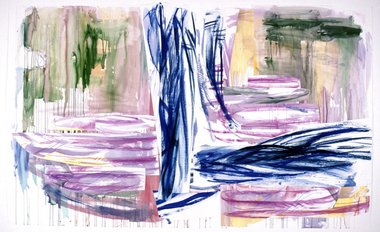
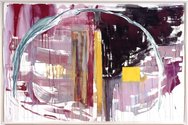
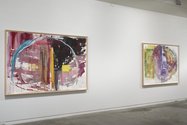
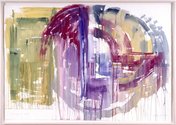
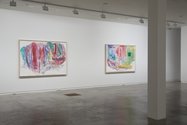
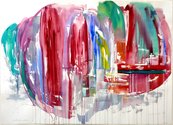

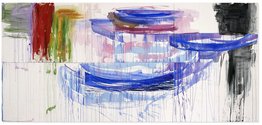
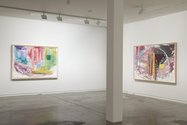
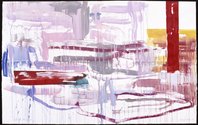
 Advertising in this column
Advertising in this column Two Rooms presents a program of residencies and projects
Two Rooms presents a program of residencies and projects



This Discussion has 0 comments.
Comment
Participate
Register to Participate.
Sign in
Sign in to an existing account.